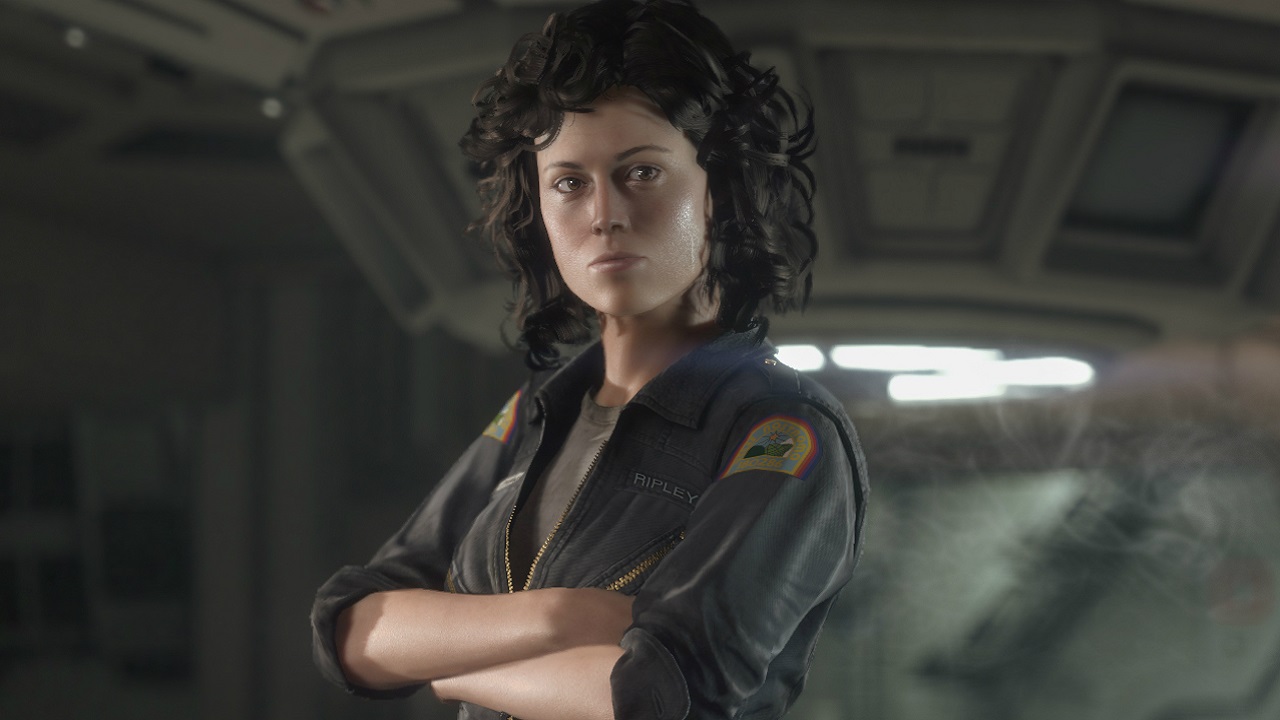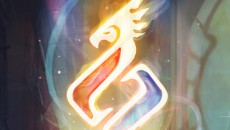Well after a week off we find ourselves firmly in October - the month of sickness – with autumn falling around us as the summer heat breaks.
This week there I look at cultural context in videogames, the ever evolving company that is Blizzard Entertainment, how VR will scare your pants off, and the future of prosthetic technology and human anti-aging. Further down the videos of the week cover GamerGate and ethics, an excellent trailer for Pier Solar, a debunking of internet misconceptions about climate change, and predictions about education in 2060.
Change is upon us and time does not stop, our only hope is to keep up. Cheers.
The Week
The Men of Final Fantasy XV Are Making Some Unhappy
First, note that online in the West (when talking about FFXV), there are people online saying that the male characters are feminine or look like a boy band. Perhaps! This isn’t surprising within a Japanese context. Look at the country’s boy bands and its legions of female fans.
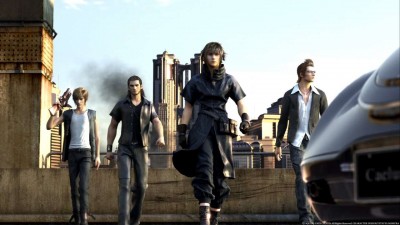 Context t is important to remember when discussing different cultures and their cultural exports, say videogames. What may be strange here may be common place there, and a company like Square Enix and their upcoming Final Fantasy XV is also subject to context.
Context t is important to remember when discussing different cultures and their cultural exports, say videogames. What may be strange here may be common place there, and a company like Square Enix and their upcoming Final Fantasy XV is also subject to context.
After a decade of trying to market and design their games for a western audience Square Enix may have finally decided to put their home fans first over the west. This transition comes after the failed experiment that is Final Fantasy XIII that was largely designed for western audiences but clearly missed the boat on many marks. Personally, I think XIII is a good if not great game with its only problem being that it is held up to a higher standard set by its predecessors. Never the less, XIII has since become emblematic of Square Enix as a whole as fans have lost faith in the company during the last console generation.
However, there has been a slow boil of a rumble online about the lack of a female member in a party comprised of gorgeous bro-dudes and brooding leather clad hunks. Was that too much? Well Brian Ashcraft points out that in Japan this boy band like cast of characters is a conscious marketing decision to woman gamers in Japan who play more games than their male counterparts. Furthermore,gender roles have also started to blend in Japan in their popular media with a whole genre called yaoi – boy love genre – targeting women that features men filling a variety of different gender roles. Ashcraft speculates that Final Fantasy XV could be taking that same route and it is falling deaf on western audiences who are more critical of the lack of female presence.
Perhaps the lack of playable women is a cultural thing, and it could all play out over time as we approach the release of the game sometime next year. As of now there is quite a bit of hype surrounding Final Fantasy XV with the last few trailers being home runs with the fans, and it would seem that the franchise is heading back to the wild fantasy adventure complete with a car and giant dinosaurs.
Ashcraft presents some good context for the lack of women in Final Fantasy XV and it is something I did not initially think about when I too asked, “where are the women?” when I saw the trailer. Enjoy.
The Three Lives of Blizzard Entertainment
“We didn’t anticipate planet-cracking success with Hearthstone,” says Metzen. “It wasn’t this giant thing. It was just this small thing made out of love. And holy shit, it worked.”
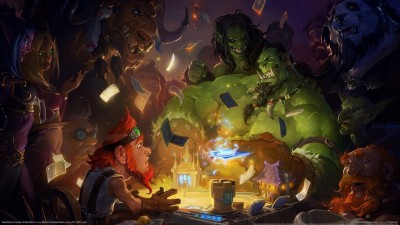 As someone who’s been a fan of Blizzard since the mid 90’s when their original “big three” were Diablo, StarCraft, and Warcraft 2, I’ve always had a fascination with how such a large company can change gears seemingly on a dime. Traditionally, Blizzard games played into the strengths of the control schemes of the day, and a constant mouse clicking could be heard from my father’s office where I would spend many hours breaking several key boards and mouses.
As someone who’s been a fan of Blizzard since the mid 90’s when their original “big three” were Diablo, StarCraft, and Warcraft 2, I’ve always had a fascination with how such a large company can change gears seemingly on a dime. Traditionally, Blizzard games played into the strengths of the control schemes of the day, and a constant mouse clicking could be heard from my father’s office where I would spend many hours breaking several key boards and mouses.
However, from 1998, after the release of StarCraft, Blizzard spent the ensuing 15 years taking established franchises and making derivative installments on their genres, and all are amazing games. Nothing really new came out during that time, nope nothing else. I’m sorry what? World of Warcraft? I’ve never heard of such a game, surly it’s not something that radically changed the company and the face of gaming for a generation.
All kidding aside, Blizzard did change because of World of Warcraft as the company shifted gears once again to service the massive project and its subsequent expansions. And I loved every second of it, from my first time stepping into Azeroth to my final “yes, please cancel my subscription” moments it was a blast. Blizzard slowly started to learn things as their game grew and suddenly they were faced with a whole new fan base, the legendary orange item known as the “middle age gamers.” Many of whom where first time players of games or so called “casuals” and Blizzard did the only sensible thing to do as they quickly became the majority player base of their largest game. They started to make World of Warcraft more accessible and open to new players, and this design philosophy trickled throughout the entire company.
Now return to the present where Blizzard has embraced the new controls of our time and released Hearthstone on any device that can run it. They are also set to release Heroes of the Storm to tackle the MOBA genre that they helped create. Both Heroes and Hearthstone take long established “hardcore” genres and open the doors for new players while at the same time still providing a quality gaming experience. These projects were developed with considerably smaller teams than Blizzards “bigger” titles and as such they’ve been able to free up more manpower to start other projects or return to the larger projects.
It seems that innovation has returned to Blizzard after they spent the last 15 years making the same three games, and it is refreshing to see such a large company execute this transition with such skill and class that EA only wishes it had.
Virtual Reality Lets Horror Fans Scar Themselves In All New Ways
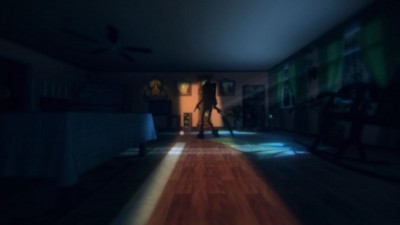 I have a love hate relation ship with horror games, and more often than not I end up never playing the ones I purchase. More often than not I’ll end up watching someone else play them on YouTube or Twitch, but I enjoy supporting quality games and the developers who make the games I’m too afraid to play. However, even from this side of the screen I can tell that some games are too much, usually when the player starts to cry or scream out in total terror. Most of these events take place when a player is experiencing a game through the Oculus Rift.
I have a love hate relation ship with horror games, and more often than not I end up never playing the ones I purchase. More often than not I’ll end up watching someone else play them on YouTube or Twitch, but I enjoy supporting quality games and the developers who make the games I’m too afraid to play. However, even from this side of the screen I can tell that some games are too much, usually when the player starts to cry or scream out in total terror. Most of these events take place when a player is experiencing a game through the Oculus Rift.
Last week I demoed the latest model of the Oculus Rift and while I wasn’t playing a horror game (it was EVE Valkyrie, a largely unremarkable space shooter) it was none the less a disorienting and isolating experience as I never quite felt at ease while I was cut off from the outside world. When developers combine those factors into a horror game they are able to make some truly terrifying games that can easily trick our brains into thinking that the unreal is real, the monster is always behind you (RIGHT NOW). Unlike movies, games do not play out when you close your eyes and your character will stand there running through their idol animations until you continue forward.
However, while horror may be one of the man reasons that there has been a resurgence in VR tech and gaming, there is a whole new world for almost every genre to explore. Full immersion into an MMO, RTS, FPS, and other acronyms are all in the works and in time will become more refined. Every year the hardware gets cheaper, smaller, and more powerful until it’ll be able to be indistinguishable from any other game and you the player will benefit from such developments.
Exciting times.
The Woman With the Bionic Eye
Argus II isn’t perfect: It’s only black and white, for starters. And it’s not like you’re feeding a full image to the brain: Users can’t read signs, or recognise faces, or identify objects—at least, not usually. “I’ve been quite successful at identifying a triangle versus a circle and a square”
The Argus II is the latest in prosthetic eye technology and while it is by no means perfect, it is an amazing achievement and a step forward to ending blindness all together. Slowly, and figuratively, a picture of the future is coming into focus, one where we can easily replace injured and damaged body parts with prosthetic ones - extending not only our life spans, but our ability to function at higher levels for longer periods of time than ever before. Times will change and future generations will look back and “ask how we ever lived with blindness and death?” much in the same way we look back at past generations and their high and short lifespans.
There will also be a philosophical change as we start to blur the lines between humans and machines which is not as far-fetched as it sounds - I mean, look at the Argus II. Similar advancements have been made in limb replacements and organs, and I ask how long before it is possible to swap out bodies. However, what is currently unclear is our relationship as a self to that of our physical brains, but even the Argus II tricks our brains with electrical pulses to see shapes and light. Much like the Oculus Rift this tech will over time become cheaper and easier to produce until it hits a ubiquitous breaking point where it is almost available to everyone at reasonable cost.
Now I’m not saying that in our lifetime that we’ll enter into a cyber tech utopia but there are people alive right now who are trying to make this vision a reality. People like Dmitry Itskov who wants to digitize the human brain by 2050.
Remember that given a sufficient enough time; science will be indistinguishable from magic.
Visual Stimuli
Pier Solar
#GamerGate and Game Journalism’s Ethics Problem
13 Misconceptions About Global Warming
Year 2060: Education Predictions
Extra Study Material
Mike Rose writes about “The year of narrative design theory that went into The Vanishing of Ethan Carter”
Adam Smith of RPS reviews Alien Isolation, “Wot I Think: Alien – Isolation”
Jeffery Matulef returns to Demon’s Souls after completing Dark Souls II, “Demon’s Souls still feels fresher than its “Dark” successors”
G.F. of the Economist explains “Who owns your data when you’re dead?”
Eloyt Grant gives you tips on “How to name a video game in 5 steps”
